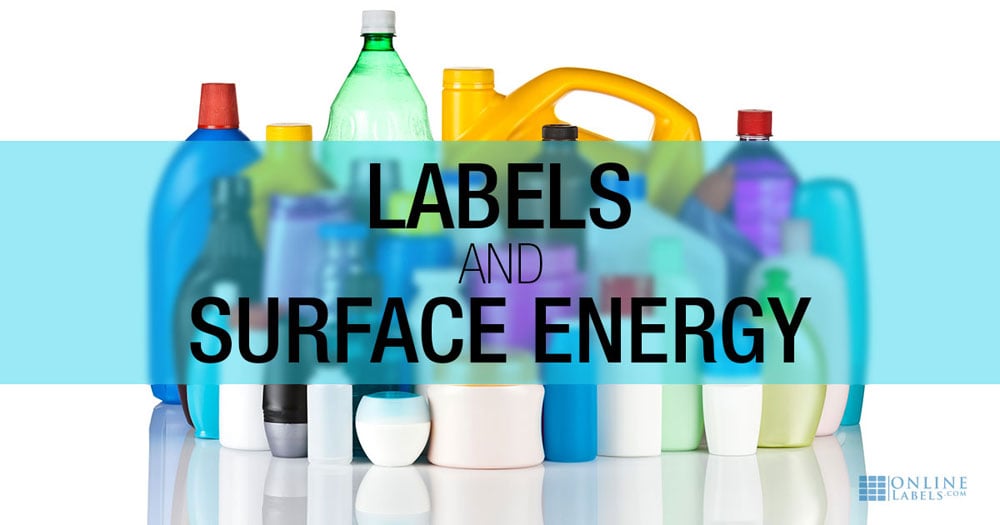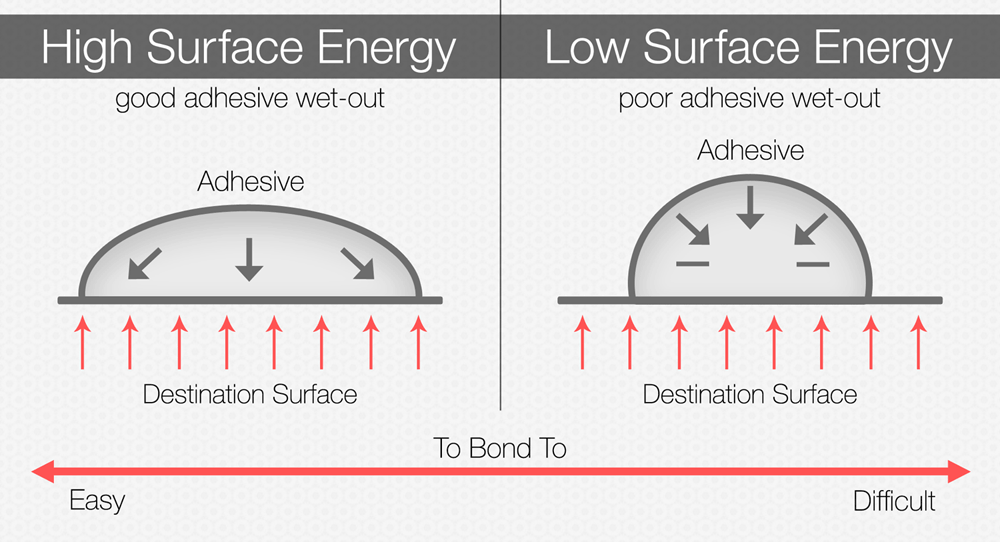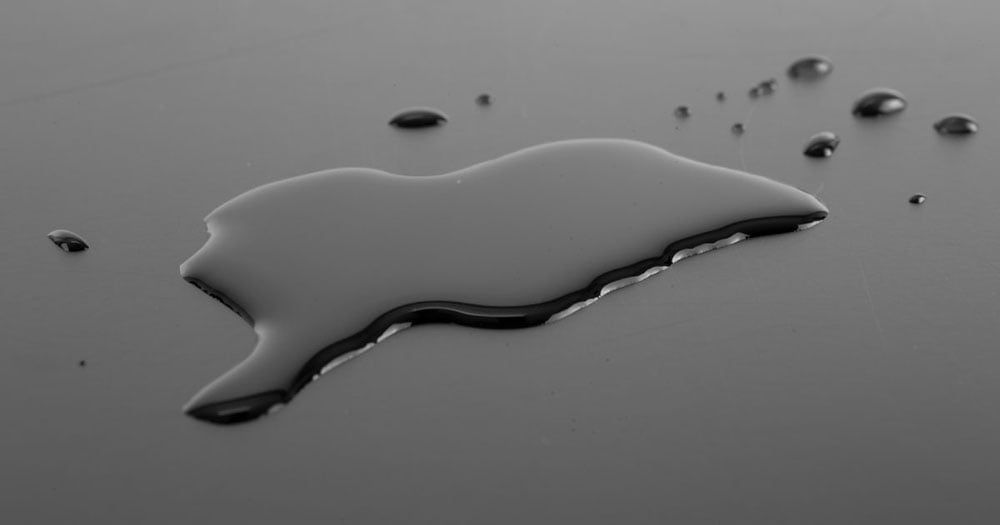Surface Energy and Labels: The Unscientific Guide

Why is it that labels stick differently to different surfaces? This question has more to do with the destination's surface than the label or its adhesive. Whether the adhesive bonds with destination surface depends on the amount of surface energy that material possess. Learn more about surface energy and how you can ensure your labels stay stuck.
What is surface energy?
 The adhesion process with high (left) and low (right) surface energy materials.
The adhesion process with high (left) and low (right) surface energy materials.
In the words of Peter Eyland, a distinguished physics instructor, "surfaces have energy associated with them because work is needed to form them. Surface energy is the work per unit area done by the force that creates the new surface."
As it relates to labels, surface energy is the degree to which the adhesive and the material's surface repel or attract. High surface energy values attract whereas low surface energy values repel. A material with a surface energy higher than that of the adhesive is an ideal situation. In general, materials with higher values bond better because good wet-out occurs.
Wet-out is an industry term to describe the flow of an adhesive over the destination's surface. Good wet-out ensures maximum contact and helps achieve strong bonding. This is why higher surface energy objects are less challenging for labels to adhere to.
Surface energy is measured in dynes per centimeter (dyn/cm).
Determining your packaging's surface energy

 How water reacts to high (left) and low (right) surface energy materials.
How water reacts to high (left) and low (right) surface energy materials.
Pouring water on your surface is an easy way to test its surface energy. In this test, water is representative of the adhesive. Once you've applied water to your material, take notice of how the water reacts. If it pools, it means the water is more attracted to the surface than it is to itself.
This means your surface has high surface energy. If it beads, the water is more attracted to itself than the destination, i.e. your material has low surface energy. If you're having trouble picturing this, consider pouring water on aluminum (840 dyn/cm) vs. a Teflon® pan (18 dyn/cm). Water on aluminum pools whereas water on Teflon® beads.
Common high surface energy materials
For the purposes of this article, materials are considered to have high surface energy if they have more than 40 dyn/cm.
| Material | dyn/cm |
|---|---|
| Copper | 1,103 |
| Stainless Steel | 700-1,000 |
| Aluminum | 840 |
| Zinc | 753 |
| Tin | 526 |
| Glass | 250-500 |
| Nylon | 46 |
| Polyester (PET) | 43 |
| ABS Plastic | 42 |
| Polycarbonate | 42 |
How to pick a label for high surface energy materials
All of our label materials have an adhesive capable of creating a long-lasting bond with high surface energy materials. Therefore, there is no need to invest in a special strength adhesive.
However, if the label is likely to come into contact with liquids or moisture, we recommend you use any of our weatherproof / waterproof label products.
Common low surface energy materials
For the purposes of this article, materials are considered to have low surface energy if they have less than 40 dyn/cm.
| Material | dyn/cm |
|---|---|
| PVC | 39 |
| Acrylic | 38 |
| Polyethylene (PE) | 31 |
| Polypropylene (PP) | 29 |
| PTFE Flouropolymer (Teflon®) | 18 |
How to pick a label for low surface energy materials
Our aggressive white matte labels as well as all of our weatherproof / waterproof label sheets and roll products are suitable for low surface energy materials.
They possess a stronger adhesive and are more suitable for hard-to-stick materials. Note that while the adhesive of our aggressive white matte labels is more powerful, if your label is being used in moisture-rich or wet environments, our weatherproof / waterproof labels are your best option.
Understanding label surface energy is just the first step to better adhesion. Get better results from your labels with our high-quality materials in sheets or rolls. Learn more about our aggressive white matte for high surface energy objects, find the perfect match for low surface energy objects with our extensive list of standard label materials, or browse our weatherproof / waterproof labels for everything in between.


